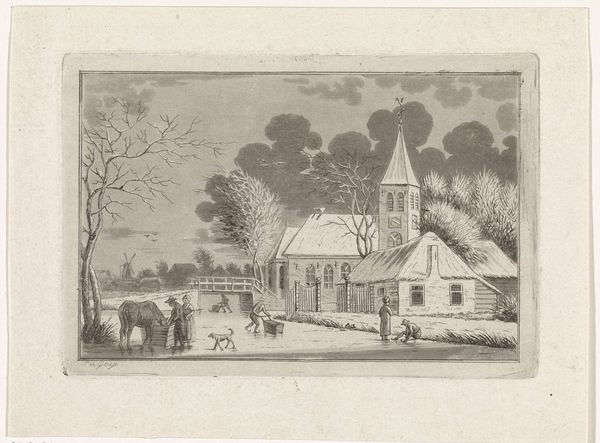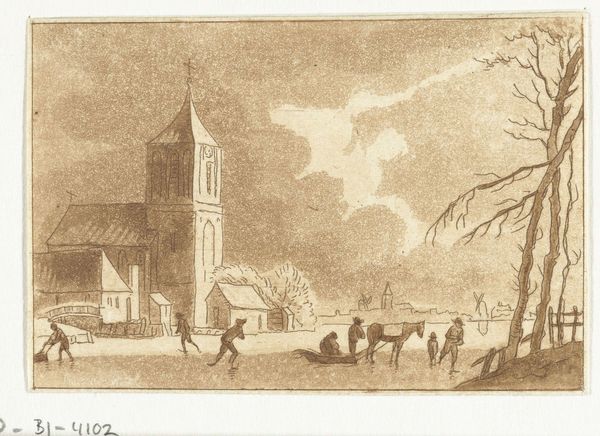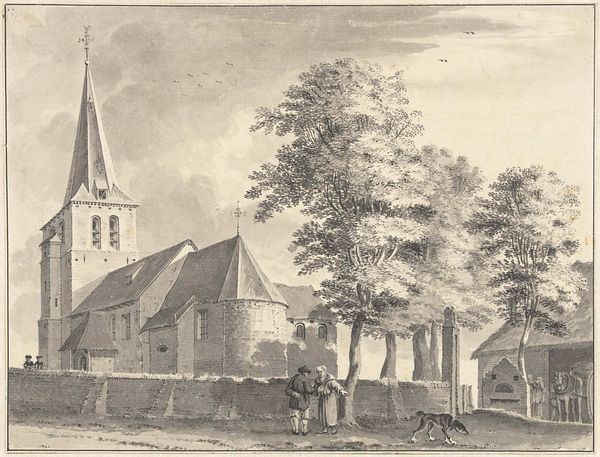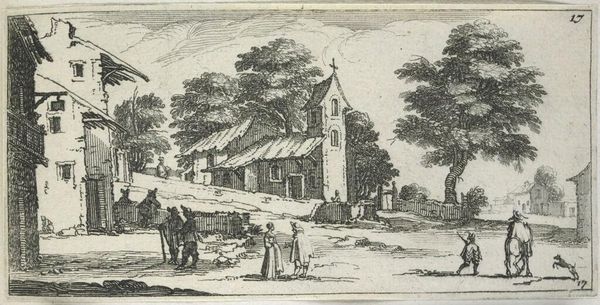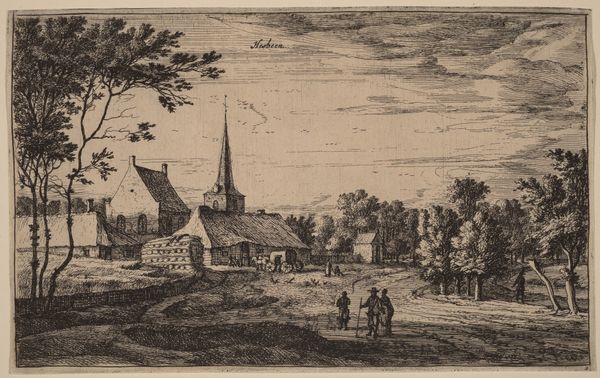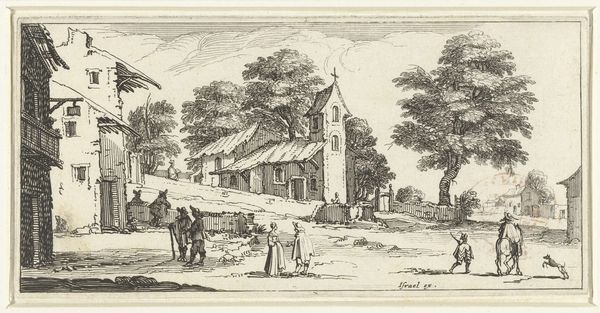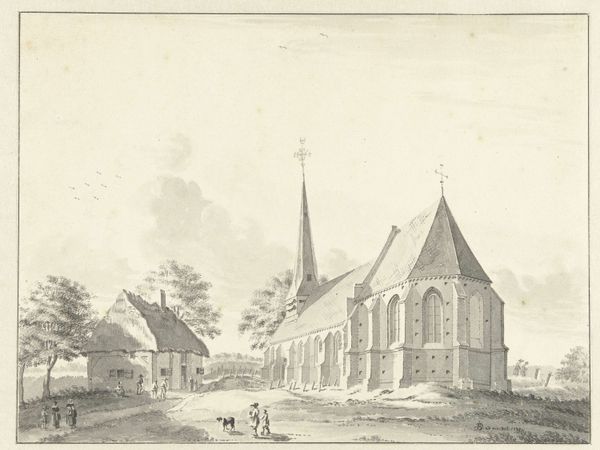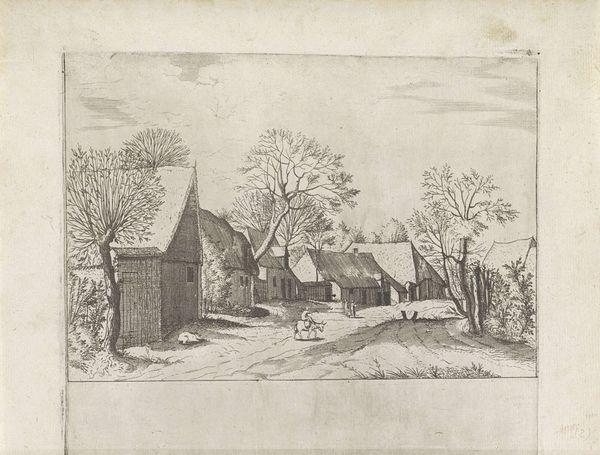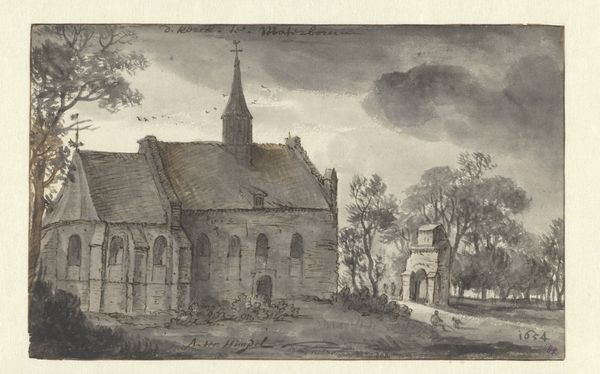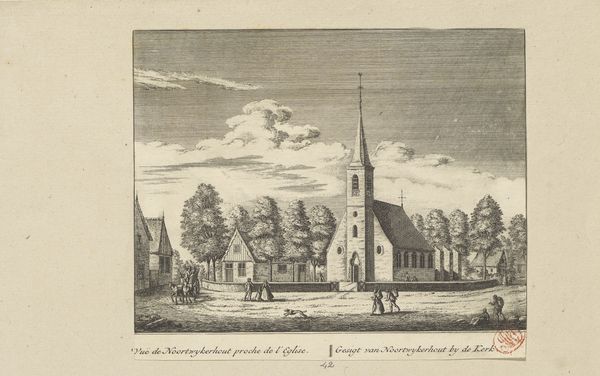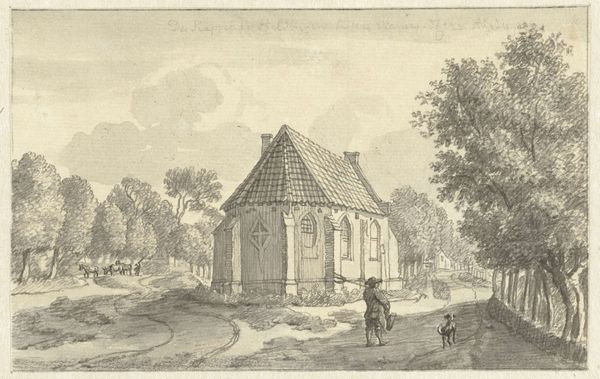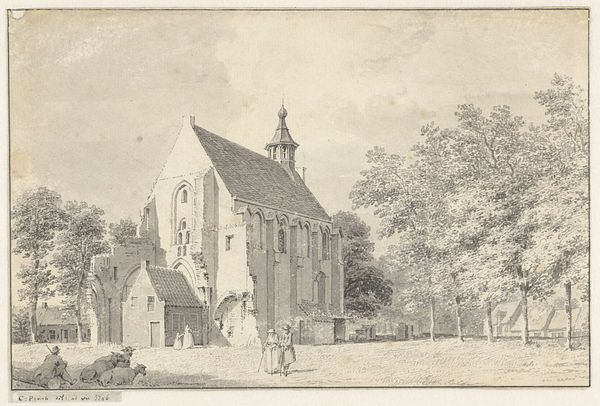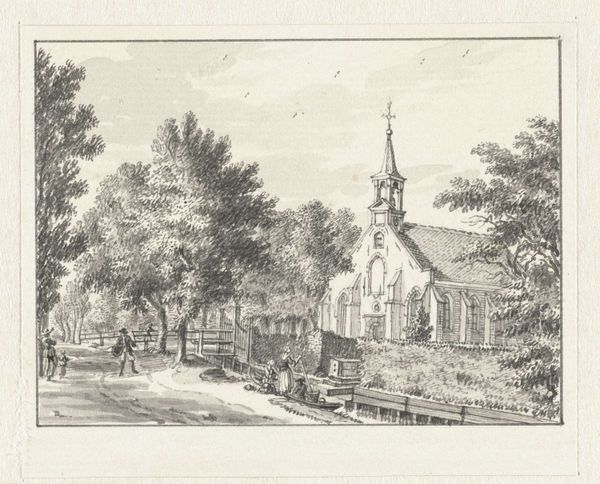
drawing, ink
#
drawing
#
landscape
#
ink
#
romanticism
#
pen-ink sketch
#
genre-painting
Dimensions: height 80 mm, width 122 mm
Copyright: Rijks Museum: Open Domain
Editor: This is "Wintergezicht bij een kerk," a pen and ink drawing by Pieter de Goeje, made sometime between 1789 and 1859. I’m struck by how still and peaceful it feels, despite the everyday activities depicted. The bare trees and muted colors definitely evoke a sense of quiet winter. What do you see in this piece, considering the potential symbolic weight? Curator: Well, beyond the immediate representation of a winter scene, I'm drawn to how the image might reflect a broader cultural memory. Consider the church: what does its presence, so central to the composition, evoke for people of this period? It anchors the community but the winter setting mutes its overt religious symbolism. How does that juxtaposition affect your understanding? Editor: It almost makes it seem less imposing, more integrated into the daily lives of the people. The focus isn’t just on religious devotion but on surviving winter in a community setting. The details—the people going about their business, the animals—underscore this. Curator: Precisely. Notice how the ice functions as both a barrier and a bridge, literally and figuratively. Water, often a symbol of life, is frozen, challenging life, requiring cooperation between figures. Think about what winter landscapes represented at the time: perseverance, the cyclical nature of life, community reliance, perhaps even anxieties. How might the artist use such established symbolism to reflect on the present day? Editor: So, it's less about the literal depiction of a winter scene and more about what that scene represented symbolically to people living in that time? That helps me appreciate the depth of the work so much more! Curator: Exactly. By understanding the symbolic vocabulary used by artists like de Goeje, we unlock deeper meanings, allowing the past to speak more vividly to the present. Editor: I’ll definitely be looking at landscapes differently from now on!
Comments
No comments
Be the first to comment and join the conversation on the ultimate creative platform.
